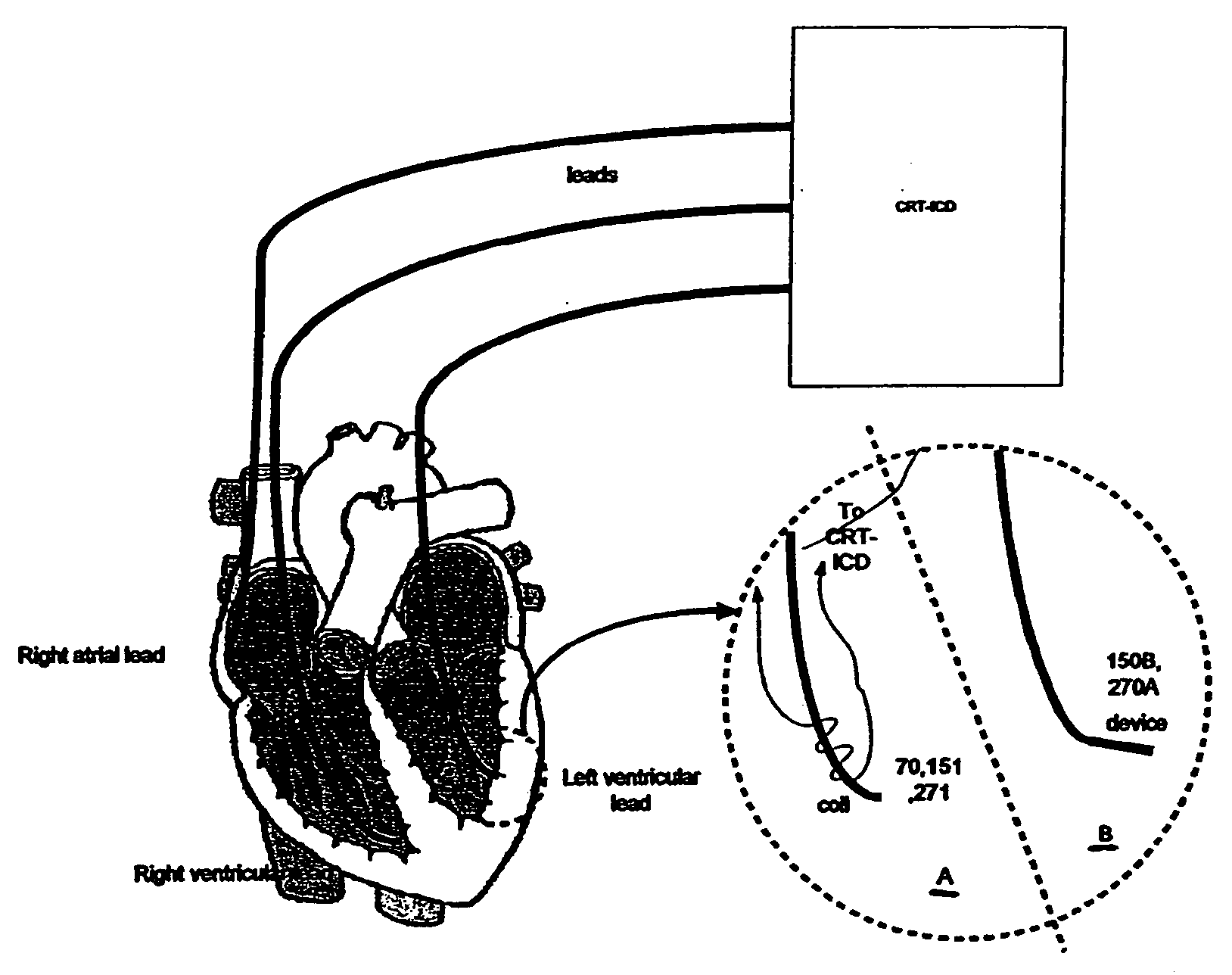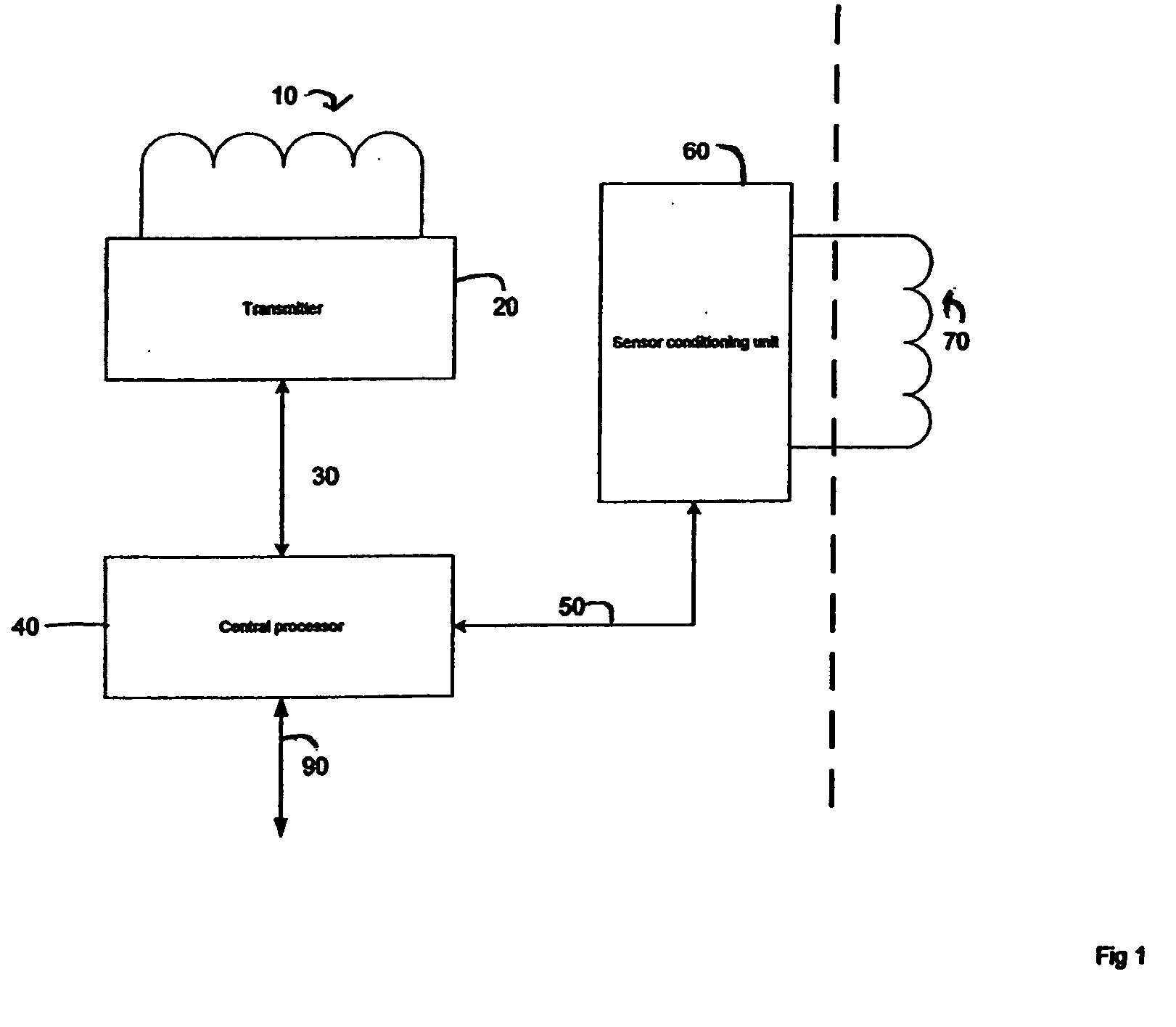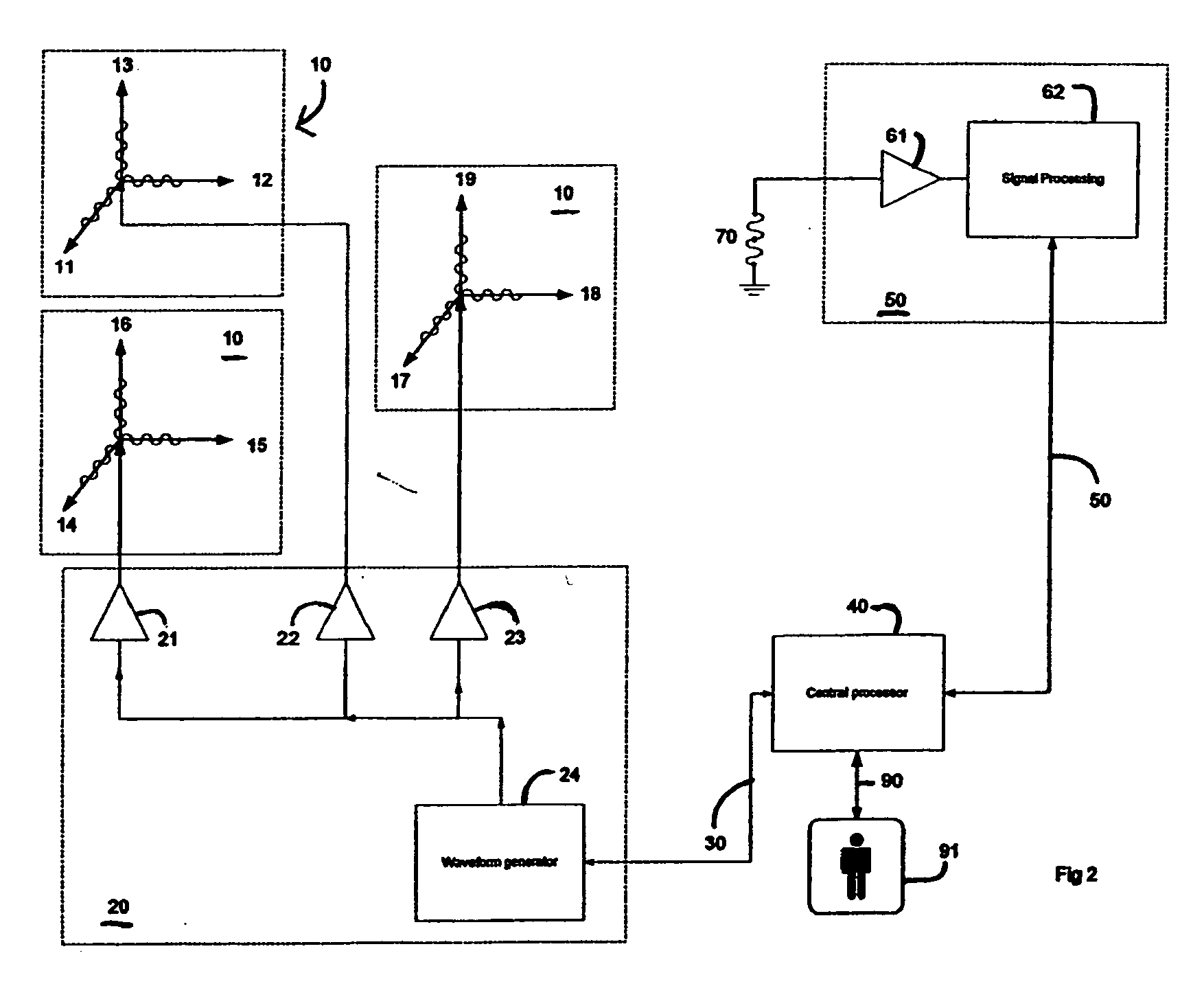Lead Tracking Of Implantable Cardioverter-Defibrillator (ICD) And Cardiac Resynchronization Therapy (CRT) Devices
a technology which is applied in the field of lead tracking of implantable can solve the problems of inability to inject contrast agents into veins, difficult insertion of cardioverter defibrillators (icd) and cardiac resynchronization therapy (crt) devices, and even impossible to achiev
- Summary
- Abstract
- Description
- Claims
- Application Information
AI Technical Summary
Benefits of technology
Problems solved by technology
Method used
Image
Examples
Embodiment Construction
[0044]All embodiments disclosed herein allow the leads to be tracked, eliminating, or at least minimizing, the use of fluoroscopy. This additional 3-dimensional tracking data also allows the surgeon to better visualize lead insertion and placement, improving the outcome of the procedure. This is accomplished by any of the techniques known in the prior art, in which 3D tracking data is fused with pre-acquired, or real time imaging data from 2D or 3D sources such as MRI, CAT and PET scans.
[0045]One preferred embodiment uses a 5 degrees-of-freedom (5DOF) sensor, typically a coil of wire or a single semiconductor device. Such sensors are capable of determining position in 3 dimensions (e.g., x,y,z Cartesian coordinates) and two device orientation parameters such as two of pitch, roll and yaw. A 5DOF tracking system typically uses N transmitters (field generators) and M sensors, with N≧5 and M=1. MN must be ≧5 and is typically 9 for best tracking results. The N measurements are typically...
PUM
 Login to View More
Login to View More Abstract
Description
Claims
Application Information
 Login to View More
Login to View More - R&D
- Intellectual Property
- Life Sciences
- Materials
- Tech Scout
- Unparalleled Data Quality
- Higher Quality Content
- 60% Fewer Hallucinations
Browse by: Latest US Patents, China's latest patents, Technical Efficacy Thesaurus, Application Domain, Technology Topic, Popular Technical Reports.
© 2025 PatSnap. All rights reserved.Legal|Privacy policy|Modern Slavery Act Transparency Statement|Sitemap|About US| Contact US: help@patsnap.com



